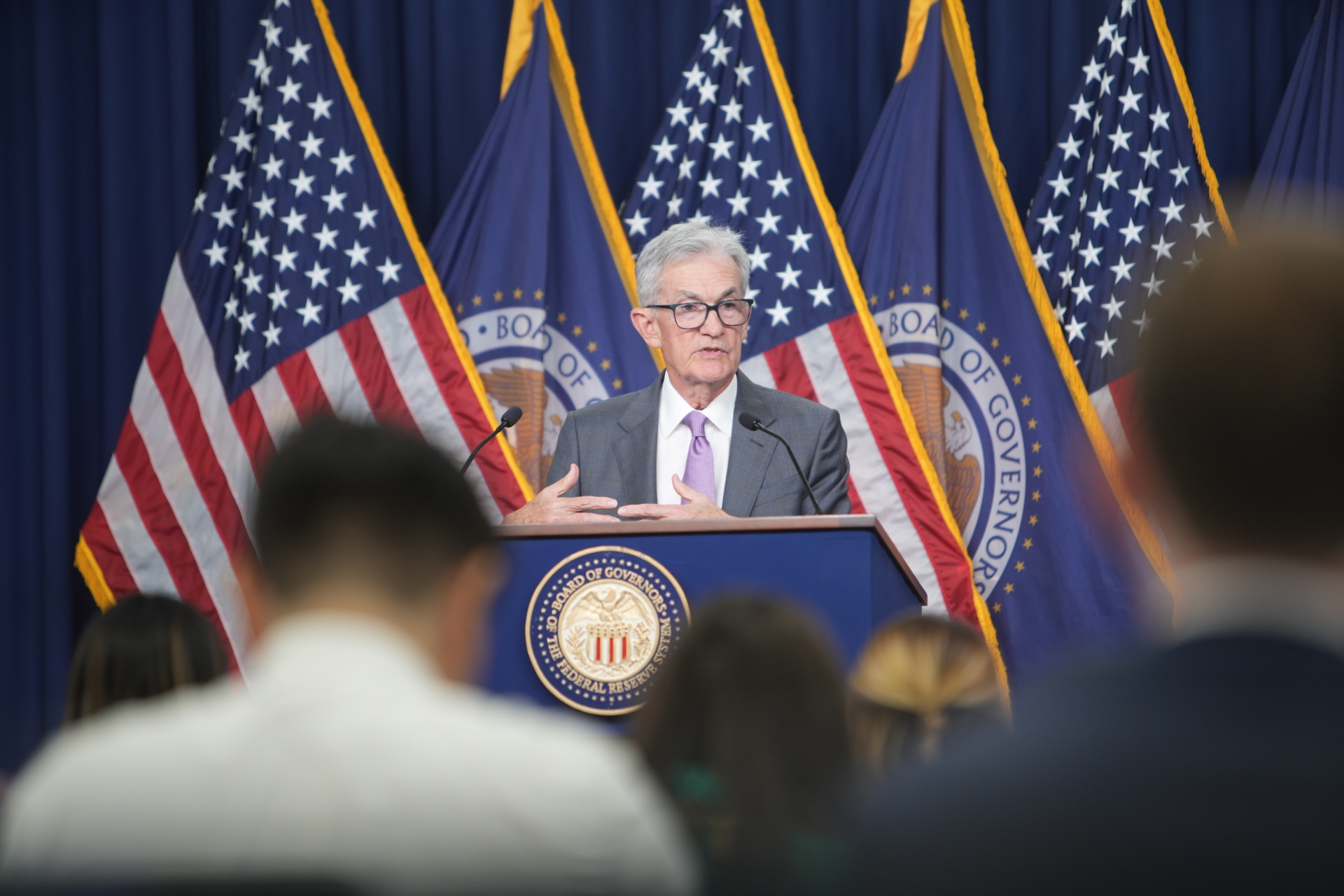July’s Jobs Disaster Pulls the Rate Cut Forward to September
It looks like the market is finally going to get what it has wanted for over a year—a rate cut from the Federal Reserve.
The July jobs report released on Friday showed that the labor market was on much weaker footing than previously thought. Economists had forecast a cooling of demand for workers to bring monthly payroll growth down to 180,000. Instead, the economy added just 114,000 jobs.
Perhaps even more importantly, the unemployment rate unexpectedly surged higher. Defying expectations for the rate to match the prior month’s 4.1 percent, it jumped to 4.3 percent. That’s the highest level since October 2021, when the economy was still rebuilding itself after the pandemic and lockdowns.
Just a few days earlier, the Fed had said that it viewed the risks to the two sides of its dual mandate—by law the Fed is required to pursue maximum employment and stable prices—to be roughly in balance. That meant that in the Fed’s view there were roughly equal risks that the labor market might weaken or that inflation might accelerate or become stuck at too high of a level.
The July jobs report suggests that balance has tipped toward labor market risk. While 114,000 jobs is not really all that bad—it would have been considered a decent report in the not-so-distant past—and a 4.3 percent unemployment rate is still low by historical standards, the sudden and unanticipated slump in hiring and rise in joblessness indicates a fragility to the economy that was only hazily glimpsed in earlier economic data.
Fed Chairman Jerome Powell and other Fed officials have made it clear that they expect to cut this year. The big difference among Fed officials appeared to be that some would have preferred to cut earlier than others, reflecting different views of the risks to employment and inflation. Powell, at his press conference on Wednesday, seemed to clearly lean toward a preference to cutting in September—so long as the data could plausibly justify a cut.
The jobs report provides the sought-after justification. As a result, we think it locks in a September rate cut. Even those at the Fed who might still worry about inflationary risks are likely to be persuaded to go along with cutting now.
Sahm Times It’s a Recession, Sahm Times It’s Not
The work of former Fed economist Claudia Sahm shows that there is very good reason for the Fed to worry about a sudden rise in the unemployment rate. Sahm’s research shows that when the three-month moving average of the unemployment rate moves a half percentage point above the lowest three-month average hit in the past 12 months, the economy is typically already in a recession. This has become known as the “Sahm Rule.”
It’s important to note that the size, speed, and duration of the increase matters. A slow drive up in the unemployment rate is not necessarily a recession indicator. Neither is a temporary spike in unemployment. And coming close to the threshold tells us nothing about the economy. You need the near-term average to rise by a half percentage point above the lowest average over the past year to trigger the recession signal.
We crossed the threshold in July. According to the the real time Sahm Rule measure maintained by the Federal Reserve Bank of St. Louis, the three-month average unemployment rate is 0.53 above the recent low average.
Sahm herself told the financial press on Friday that she does not think we’re in a recession but that “we’re not headed in a good place.” One reason to think that we might not be in a recession is that even though we’ve seen a rapid increase, the unemployment rate is still very low by historical standards. Prior the the Trump presidency, the unemployment rate had not been as low as 4.3 percent since 2001.
The Sahm Rule may also be confounded by the surge of migration over our southern border and the Biden administration’s likely lawless grant of work permits. This has added millions to the labor force. What’s more, the post-pandemic economy has triggered a host of once reliable recession indicators—the inverted yield curve, plunging leading economic indicators, depressed consumer confidence—that turned out to be false (or much too early) alarms.
One way of thinking about the Sahm Rule is not as a foolproof way of detecting a recession, the definition of which is subjective and open to debate, but as a signal that the government should take action to stabilize the economy. Sahm advocates automatic fiscal stabilizers, such as stimulus checks, when the half-point threshold is crossed. Fed officials, however, are likely to see the threshold as a reason to start cutting rates—if only because that is the economic tool they’ve been given.
Bad News Is Bad News Again
Ironically, the market got what it wanted—and then immediately threw a fit. The stock market went into a tailspin following the release of the jobs numbers, reversing the recent pattern in which bad news for the economy was good news for stocks. The reason the reaction is different this time is that the market was already assuming a rate cut. So it no longer sees bad news as necessary to produce a cut.
The cut the market wanted, however, was a cut of choice, a soft-landing cut that would indicate an end to the risk of higher inflation but not concerns over a sharp slump. What it didn’t want was a cut of obligation, a cut needed to fend off or ameliorate a recession. Bad news is bad news again.

Federal Reserve Chair Jerome Powell answers reporters’ questions at the Federal Open Market Committee press conference on July 31, 2024. (Federal Reserve via Flickr)
The jobs numbers also provide political cover for the Fed to cut. The Democrats were desperately seeking a “good news” Fed cut, one that would allow them to declare that they had vanquished the beast of inflation, presumably by lecturing us nonstop about the evils of corporate greed. The trouble for the Fed was that a voluntary, good news cut ahead of the election would smack of partisan politics. If the economy was not in danger, why not wait until after the election?
Now the Fed can justify its cut based on economic fundamentals. But those economic fundamentals—a deteriorating job market and risk of recession—will make it much harder for the Harris campaign to try to convince Americans that the Biden-Harris administration’s economic stewardship has not been the catastrophe public opinion polls show so many believe it to be.
The likely path forward for the Fed is now a quarter-point cut in September. We do not think that the Fed is likely to heed calls for an emergency rate cut before the September meeting or super-size the cut to a half point, which some Wall Street analysts are now predicting. Instead, the Fed will likely proceed gradually, cutting at a measured pace, with an eye still toward an inflation rate that remains above the two percent target.
